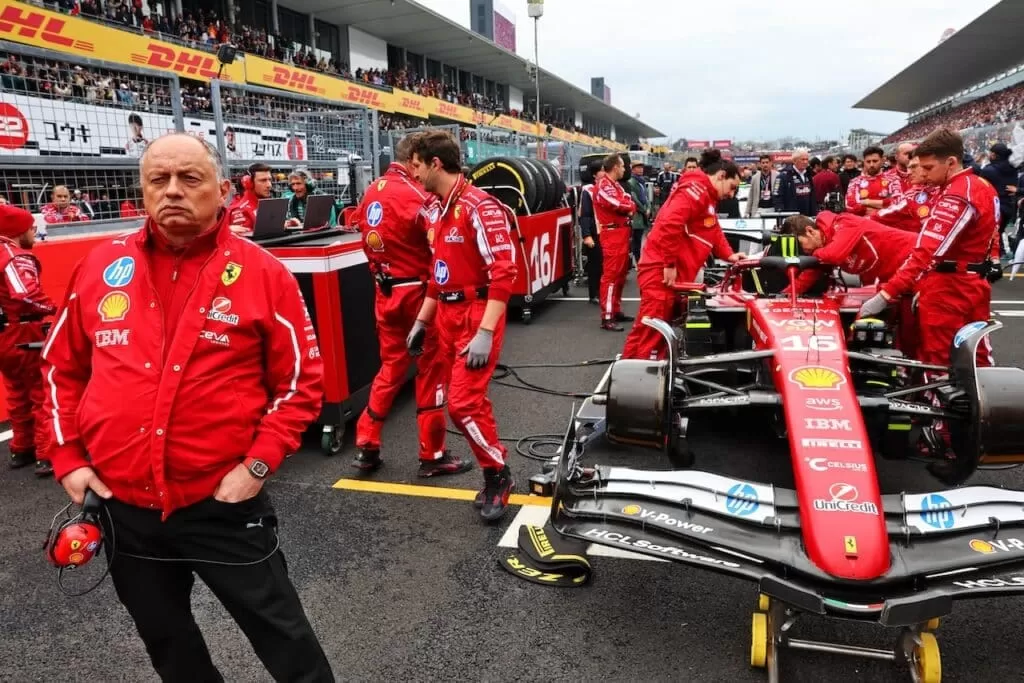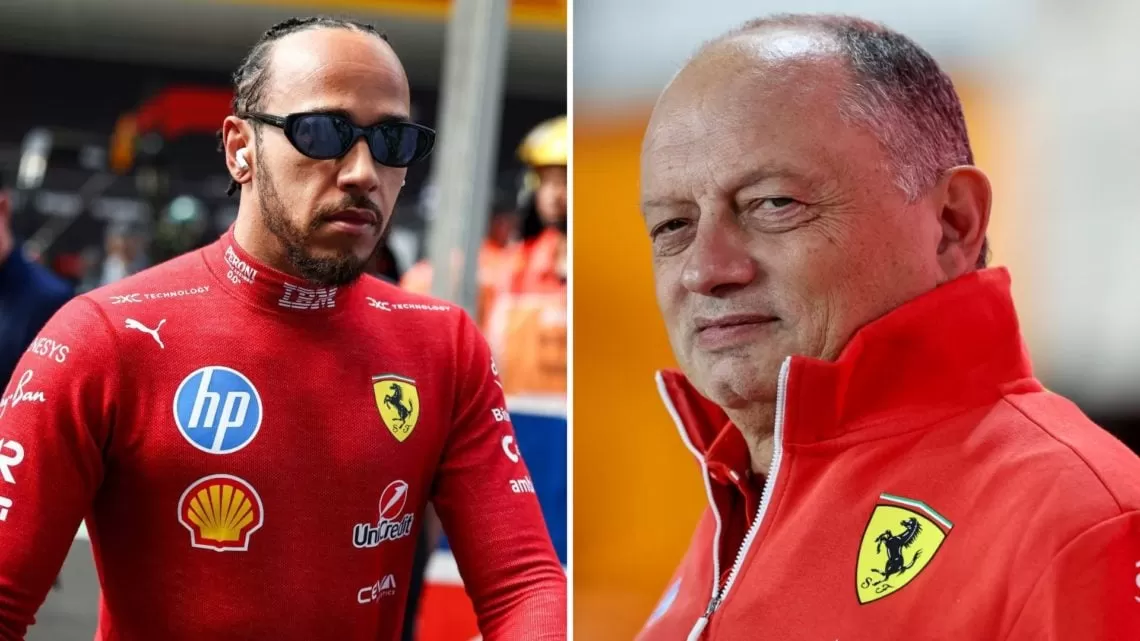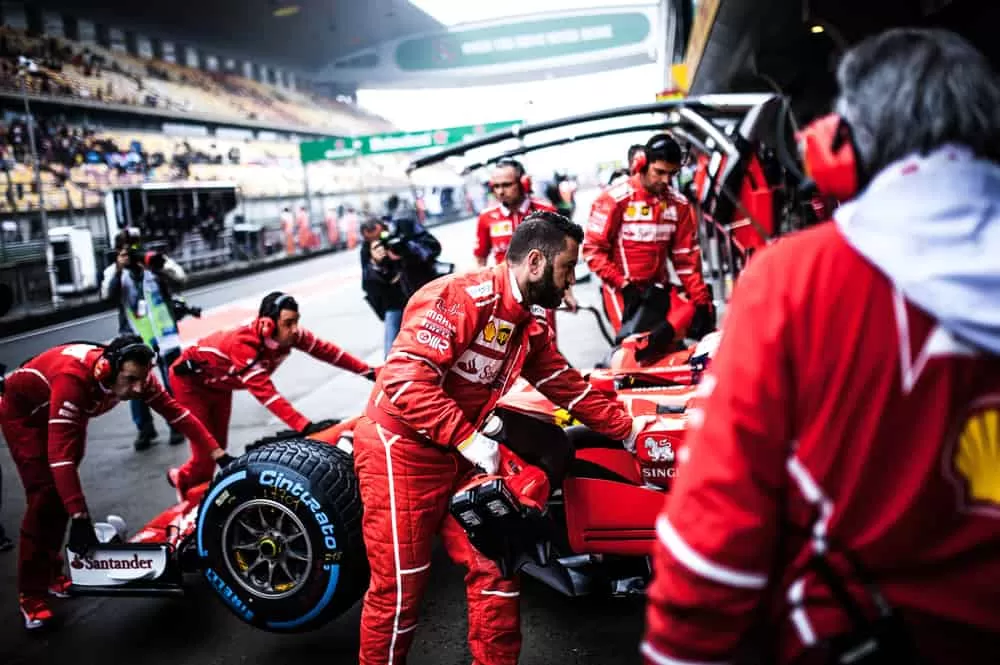Ferrari’s 2025 Formula 1 season has stumbled out of the gate, but a crucial upgrade at the Bahrain Grand Prix could be the lifeline the Maranello team needs.
With a new floor designed to address the SF-25’s balance and performance woes, the Scuderia is banking on this update to reverse their fortunes.
As Lewis Hamilton hints at disparities between his and teammate Charles Leclerc’s cars, and team principal Fred Vasseur urges caution, the stakes in Sakhir are sky-high.
Will this upgrade propel Ferrari back to the podium, or is an early pivot to 2026 looming?

The SF-25’s early season struggles have been stark. After three races and a sprint event, Ferrari languishes with just 35 points, a far cry from the championship-contending form expected after a hyped-up pre-season. Issues like understeer, rear downforce limitations, and an overly sensitive setup have plagued the car, leaving drivers battling instability and a narrow operating window. Hamilton’s disqualification in China due to excessive skid block wear exposed a critical flaw: the team’s inability to run the car at optimal ride height without risking technical breaches. This forced Ferrari to raise the car, sacrificing downforce and adding drag—a compromise that has dulled their edge against rivals like McLaren and Red Bull.

Enter the Bahrain upgrade, a new floor aimed at stabilizing the SF-25’s aerodynamics. The redesign focuses on improving airflow beneath the car, shifting the center of pressure forward to combat understeer and enhance cornering rotation. By refining the keel’s geometry and optimizing suspension kinematics, Ferrari hopes to widen the car’s performance window, allowing drivers to push harder without fear of bottoming out. This is no small feat in Bahrain’s scorching conditions, where tire degradation and top speed are king, amplified by three DRS zones. If successful, the upgrade could unlock the SF-25’s latent potential, offering Hamilton and Leclerc a platform to challenge for top positions.

Yet, internal debates cloud the picture. Vasseur and technical director Loic Serra advocate a measured approach, emphasizing the need to fully understand the car’s weaknesses before rushing upgrades. Initially slated for Miami, the floor’s early deployment in Bahrain reflects urgency from the aerodynamicists, who see Sakhir’s layout as ideal for testing against pre-season data. However, Vasseur’s caution underscores a deeper concern: without a clear grasp of the SF-25’s complexities, the team risks repeating past mistakes. The Suzuka Grand Prix laid bare the car’s flaws, with Hamilton noting a performance deficit on his side of the garage, estimating a one-tenth-per-lap loss. His optimism for Bahrain hinges on fixing this “underperforming element,” but his comments have sparked speculation about unequal treatment—an idea Vasseur firmly rejects.

For Hamilton, Bahrain is a chance to silence doubters. His frustration has been palpable, yet his call for upgrades suggests confidence in Ferrari’s engineering prowess. Leclerc, meanwhile, has extracted slightly better results, with a P4 in Japan marking the team’s high point. The contrast fuels questions about setup preferences and driver adaptation, with Hamilton’s lower, stiffer setup potentially exacerbating ride-height issues. As Ferrari navigates these dynamics, the new floor must deliver consistency across both cars to restore harmony and momentum.

Bahrain’s outcome will shape Ferrari’s path. A successful upgrade could reignite their 2025 campaign, positioning them closer to the front in a season where qualifying and tire management are proving decisive. Failure, however, might force an early shift to 2026 preparations, a bitter pill for a team with championship aspirations. As the Tifosi hold their breath, Ferrari’s gamble on the SF-25’s new floor could redefine their season—or expose deeper cracks in their ambitious blueprint.





